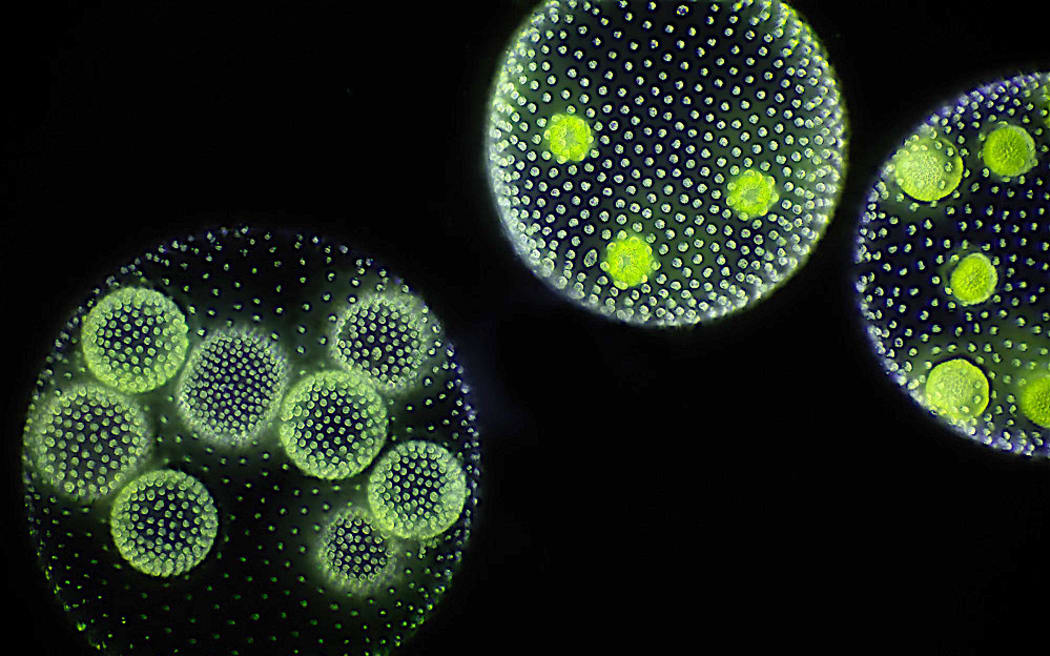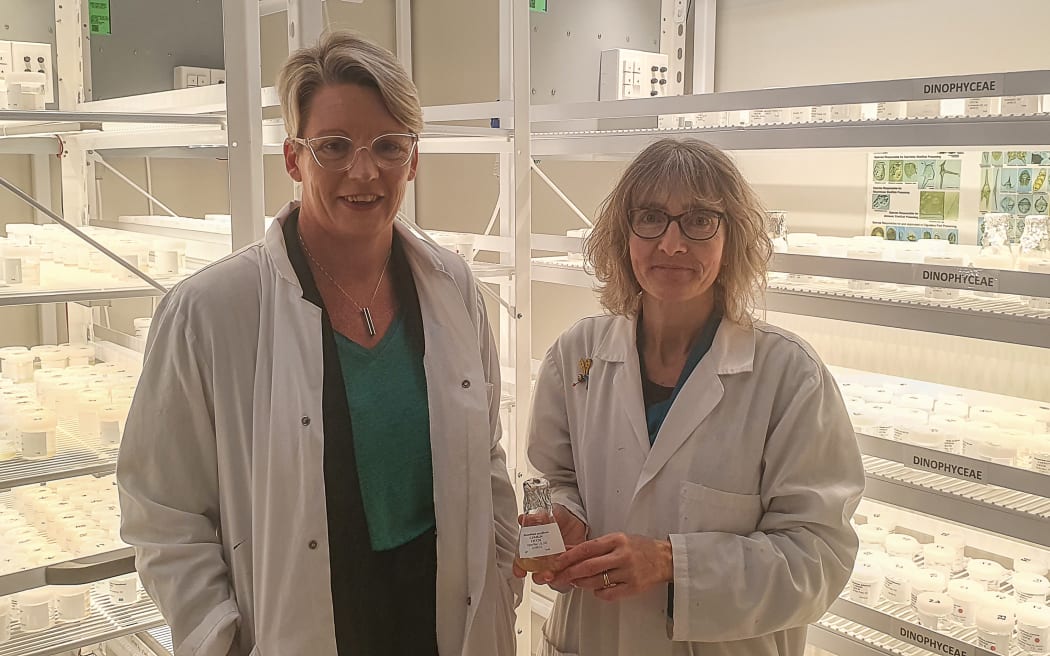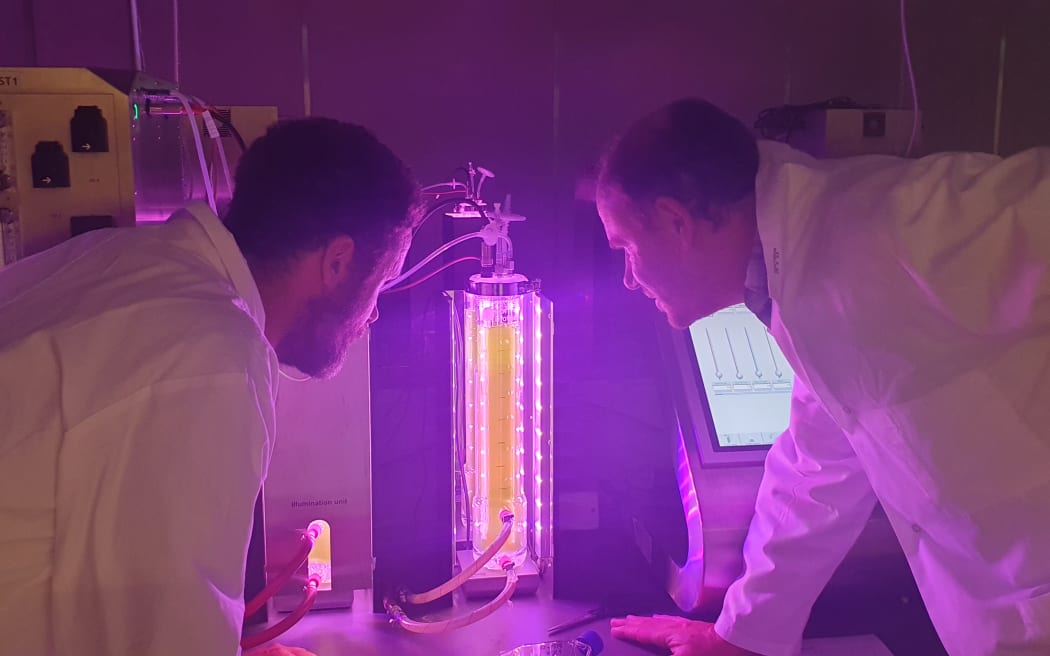Imagine a future where your burger comes with a plankton patty.
Or where you are prepped for a hospital operation with an algal anaesthetic.
If Cawthron Institute researchers have their way, this microalgae-themed future for food and pharmaceuticals could be just around the corner.

The microalgae species Volvox aureus viewed under a microscope. Photo: Frank Fox via Wikimedia CC BY-SA 3.0 de / http://www.mikro-foto.de
Follow Our Changing World on Apple Podcasts, Spotify, Stitcher, iHeartRADIO, Google Podcasts, RadioPublic or wherever you listen to your podcasts
The Cawthron Institute research is based on a culture collection of microalgae, also known as phytoplankton. The collection goes back more than three decades, and now contains more than 750 isolates or different strains of microalgae, collected from New Zealand, Antarctica and the Pacific. It includes marine and freshwater species.
The collection differs from Aotearoa’s other significant national biological collections – think herbariums containing dried specimens of plants, for example – in that it is a living collection.

Cath McLeod and Sarah Challenger with the Cawthron Institute's microalgae collection. Photo: Alison Ballance
Curator Sarah Challenger has the job of keeping the collection alive and healthy. The microalgae require light of the right wavelengths, nutrients, and a suitable temperature to survive. Every three weeks Sarah carefully replaces the water and nutrients in the small plastic pottles in which the living samples are maintained.
Sarah says it is a much easier job to care for some of the freshwater microalgae, which can survive cryopreservation – or freezing – to very low temperatures and be brought back to life later as needed.
The Cawthron Institute’s Chief Science Officer, Dr Cath McLeod, says the collection began with a monitoring programme for toxic phytoplankton blooms in the Marlborough Sounds that were having an impact on shellfish farms. The collection grew as the researchers realised that phytoplankton was a vast untapped resource which could potentially provide ingredients for food and pharmaceutical products.
Developing new food and drugs
Andy Selwood and Dr Matt Miller are currently screening about a hundred of the different strains to identify which ones might produce useful bioactive compounds. They grow each strain in a series of one-litre bioreactors, exposed to slightly different combinations of light and nutrients. This allows the researchers to identify optimum growth conditions and work out which strains are producing what kinds of bioactives and in what quantities.

Andy Selwood and Matt Miller check on microalgae growing in a one-litre bioreactor at the Cawthron Institute. Photo: Alison Ballance
Matt is particularly interested in levels of protein and has already identified some strong contenders. This work is in collaboration with Newfish, a company that is developing new ingredients for food.
Andy is providing a compound called neosaxitoxin for clinical trials being run by medical researchers at Boston Children’s Hospital, which is a Harvard Medical School teaching hospital. The compound comes from the microalgae Alexandrium pacificum, which was the problem species affecting shellfish farms in the Marlborough Sounds. It produces a paralytic shellfish toxin which also has potential to be a new class of local anaesthetics that offer long-lasting pain relief.
The Cawthron Institute had already developed ways to isolate the neosaxitoxin, and they have now scaled up production to supply the clinical trials.
To learn more:
-
Visit another nationally important biological collection: the New Zealand Fungarium.
-
Hear how researchers are working out ways to grow and use the microalgae’s bigger cousins, the macroalgae, in Multi-talented macroalgae.
-
Discover how Cawthron Institute researchers are using the microalgae culture collection to investigate the Science of toxic algal blooms.


